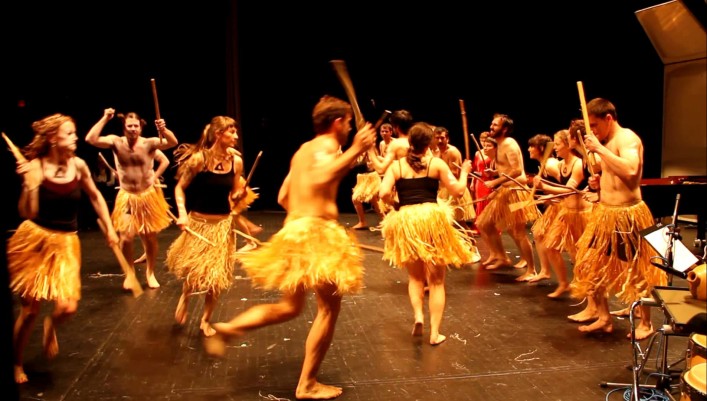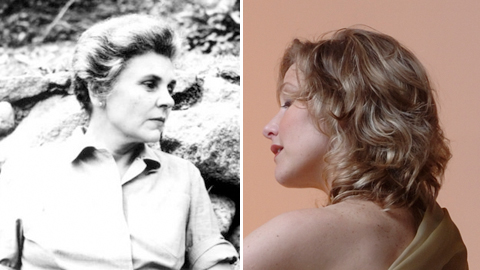
Brazil, January 1, 1502
Program note from premiere:
“I feel incredibly privileged to be able to contribute to the Elizabeth Bishop Centenary Celebrations with my own musical setting of one of her finest poems: ‘Brazil, January 1, 1502′. It was the desire of the Elizabeth Bishop Society of Nova Scotia to commission a work representing the significant portion of her life that Bishop spent in Brazil. She grew to love its landscape and culture, and enjoyed perhaps the happiest times of her turbulent life there.
I would happily urge anyone to spend time in solitude with this magnificent poem. Through successive readings, it gradually reveals its many layers, masterfully interweaving complex themes of race, culture, class, politics and gender. It is steeped in metaphor, comparing nature to still-life artwork; sexuality to the seductive Brazilian landscape, complete with mysterious and provocative animals! Deftly, Bishop even quotes the French song of the Renaissance era (L’homme Arme) in order to expose the sanctimony and hypocrisy of the colonists’ christian rituals. There is much else to mention besides, but needless to say that I experience a symphonic arc in this poem that invites a similar approach from the composer. The first stanza focuses on the natural world; the second on how it seduces; the last on the effects of human interference and conflict.
The integration of Capoeira into this piece seems natural to me, in hindsight. This most quintessential of Brazilian artforms – a dynamic fusion of martial arts, music, dance, and song – was first practised by slaves and thus borne of the colonial era. It is my hope that the music allows tonight’s Capoeiristas enough artistic leeway to do what they do best, at the same time opening up the possibility for a theatrical experience that organically grows out of the music and Bishop’s words.
I would like to thank my dear colleagues – Ross, Suzie, the musicians, Sandra Barry and the Bishop Society – for their inspiration, encouragement and tremendous expertise. Getting to know the mind of Elizabeth Bishop has been an awesome experience.” – DINUK WIJERATNE, 2011

Suzie LeBlanc, soprano
Structure
My composition ‘Brazil, January 1, 1502’ is a 30-minute musical setting of Elizabeth Bishop’s poem of the same name, an artist’s perspective and response to the Brazilian landscape before and after colonialism.
I would not describe my work as a dance-piece per se. It is, first and foremost, a vocal setting of the poem that is set instrumentally throughout. Three choreographed Capoeira dance episodes emerge from the musical narrative, only making up ten minutes of the whole composition. The integration of Capoeira seemed natural to me, since this most quintessential of Brazilian artforms – a dynamic fusion of martial arts, music, dance, and song – was first practised by slaves and thus borne of the colonial era. Upon first reading, I was struck by the almost ‘Mahlerian’ scope of Bishop’s epic, 53-line poem. As such, I decided to treat it symphonically, setting its three stanzas to form conjoined movements.
The first stanza focuses on the natural world, the music impressionistically setting up Bishop’s Brazilian landscape, untouched before the arrival of the colonists. This takes a bit of time; one hopes that the listener grows to empathize with the timeless peace of this habitat before the impact of change.
An edginess gradually creeps into the music of the second stanza, which focuses on how the habitat seduces the outsider. A ‘Sao Bento’, a traditional form of Capoeira, emerges from the allusions to the male-female interplays of the lizards, themselves metaphors for the seduction. The music and dance heat up to a climax as several males compete over the female.
The music of the third stanza deals with the effects of human interference and conflict. At its softest, there is a quote from the Busnois Mass which features L’Homme armé (Bishop here refers to the hypocrisy of the settlers). The music constructs an extended episode using this old french song, blended its melody with folk-like, ethnic rhythms. As this episode climaxes, there is an explosion of the ‘Maculele’, a war-like form of Capoeira which is ‘fought’ by dancers carrying knives, and wearing traditional skirts. After the Maculele reaches its apotheosis, we are left with a slow musical summation of the tragic aspects of the themes of the poem: the now changed aspects of race, culture, class, politics and gender in Brazil. The music takes as back to a depiction of nature as still-life artwork, as it fades to a close.
In the videos: Suzie LeBlanc, soprano; Dinuk Wijeratne, piano; Suzanne Lemieux, oboe; Mark Duggan, percussion; the McGill Percussion Ensemble; Ross Burns & Dendê do Recife (dancers)


